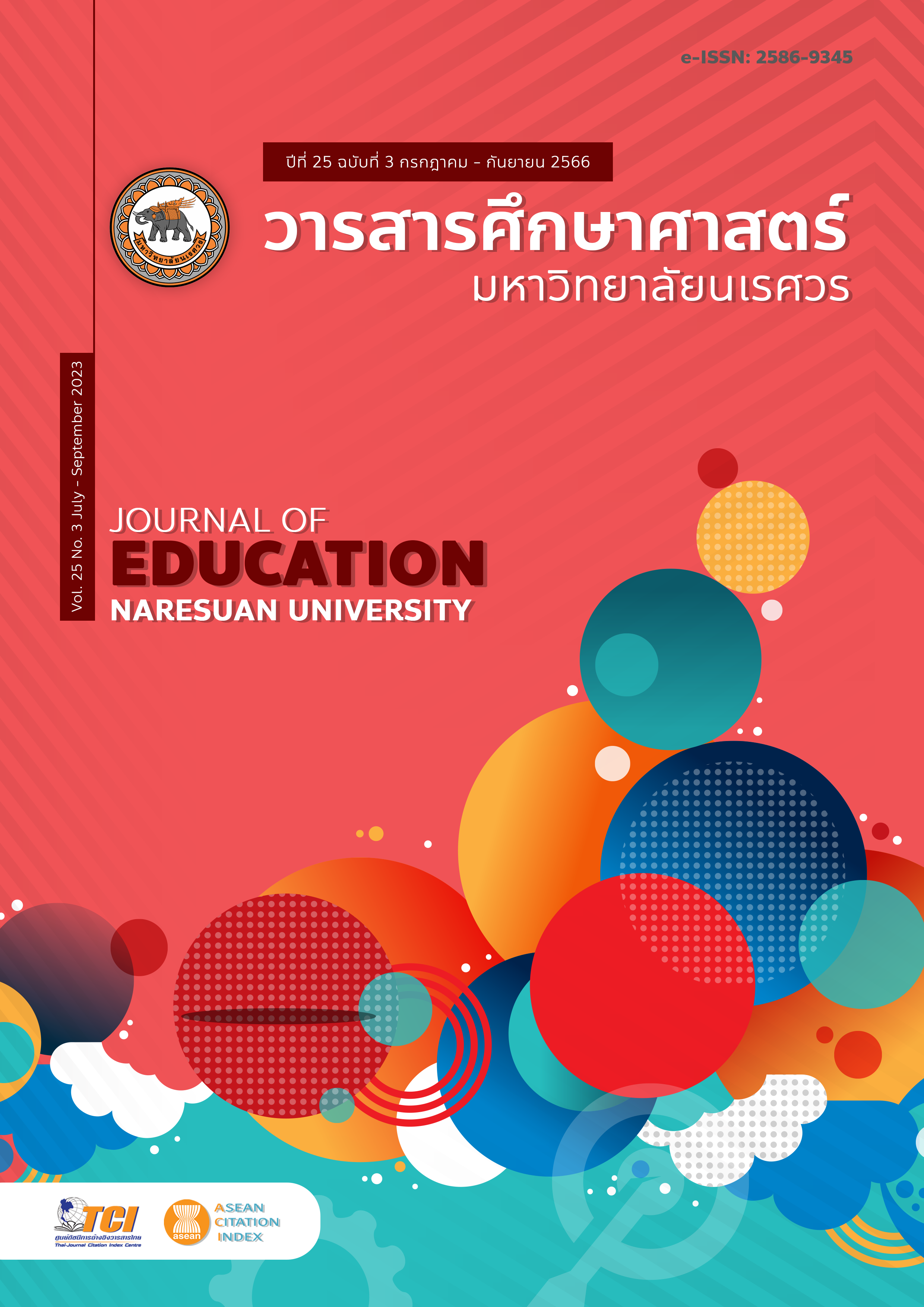DEVELOPING 11TH GRADERS' CREATIVE PROBLEM-SOLVING SKILLS USING CREATIVE PROBLEM SOLVING MODELS WITH INFOGRAPHICS ON THE TOPIC OF ACIDS - BASES การพัฒนาทักษะการแก้ปัญหาอย่างสร้างสรรค์โดยใช้รูปแบบการแก้ปัญหาอย่างสร้างสรรค์ร่วมกับอินโฟกราฟิก สำหรับนักเรียนชั้นมัธยมศึกษาปีที่ 5 เรื่อง กรด-เบส
Main Article Content
Abstract
The objectives of this research were 1) to study the approaches to learning management using Creative problem solving model together with infographics to develop Creative problem - solving skills for the 11th graders on Acids - Bases and 2 ) to study the creative problem - solving skills before and after using Creative problem solving model in combination with infographics for the 11th graders on Acids – Bases, 2nd Semester, Academic Year 2020 on 27 participants. This study employed classroom action research. The research tools were a reflection form for the learning management and the developed creative problem-solving skill test. collected the data according to 4 cycles of the action research using problem-solving learning management and creative problem solving with infographics in all 5 steps. The results showed that the approach in arranging learning management using creative problem solving models combined with the infographics during the activity must stimulate students' interest using video clips. It must use questions to encourage students to come up with diverse and innovative solutions. It also must emphasize on writing solutions that are comprehensive and relevant to the situation. It should emphasize on how to create an infographic that represents a solution. The arrangement must be done by collecting data, analyzing, compiling, processing and emphasizing communication using symbolic images instead of character description. It also must be compared with the evaluation criteria. It must use the stimulating questions to explain the differences and strengths of each method. The study demonstrated that the method should be acceptable and practical and the study also found that the creative problem - solving skills after the study using creative problem solving models were in combination with the infographics and were significantly higher than before the study at the 0.05 level of confidence.
Article Details

This work is licensed under a Creative Commons Attribution-NonCommercial-NoDerivatives 4.0 International License.
The owner of the article does not copy or violate any of its copyright. If any copyright infringement occurs or prosecution, in any case, the Editorial Board is not involved in all the rights to the owner of the article to be performed.
References
Chindanurak, T. (2016). Innovation and Media in Science Teaching and Learning in the 21st Century. Veridian E-Journal, Silpakorn University (Humanities, Social Sciences and arts), 9(1), 560-581. [in Thai]
Creative Education Foundation. (2015). Creative problem solving resource guide. 46 Watch Hill Drive Scituate, MA 02066.
Cojorn, K. (2011). A development of creative problem solving (CPS) learning model on matter and properties of matter for seventh grade students (Doctoral dissertation). Bangkok: Srinakharinwirot University. [in Thai]
Isaksen, S. G., & Treffinger, D. J. (2004). Celebrating 50 years of reflective practice: Versions of creative problem solving. Journal of Creative Behavior, 38, 75-101. https://doi.org/10.1002/j.2162-6057.2004.tb01234.x
Pangtrai, P. (2014). The development of learning activities by the future problem solving to promote creative thinking on the topic nutrition and living for grade 8 students (Master thesis). Phitsanulok, Naresuan University. [in Thai]
Sternberg, R. J., & Lubart, W. M. (2004). How to develop students creativity. association for supervision and curriculum development. versions of creative problem solving. Journal of Creative Behavior, 38(2), 75-101.
Supa-utumporn, P. (2016). The effect of implementing a 5-step learning cycle model on the ability to think logically. scientific and scientific creative ability of junior high school students in Chulalongkorn University Demonstration School Secondary Department. Journal of Education Studies, 46(2), 101–118.
Tansuwannarat, O. (2009). The results of mathematics learning activities using creative problem-solving processes on the ability to solve problems and mathematical creativity of Secondary 2 students. Bangkok: Chulalongkorn University. [in Thai]
Vanichvasin, P. (2015). Potentials of using infographics in enhancing the quality of learning. Panyapiwat Journal, 7(Special), 227-240. [in Thai]
Vongtathum, P. (2015). Creative problem solving thinking skills for 21st century of learning. Journal of Education Khon Kaen University, 11(2), 111-121. [in Thai]
Zidulka, A. D. (2017). Creative Problem Solving (CPS) in practice: A case study (Doctoral dissertation). Canada: University of Calgary, Calgary.


